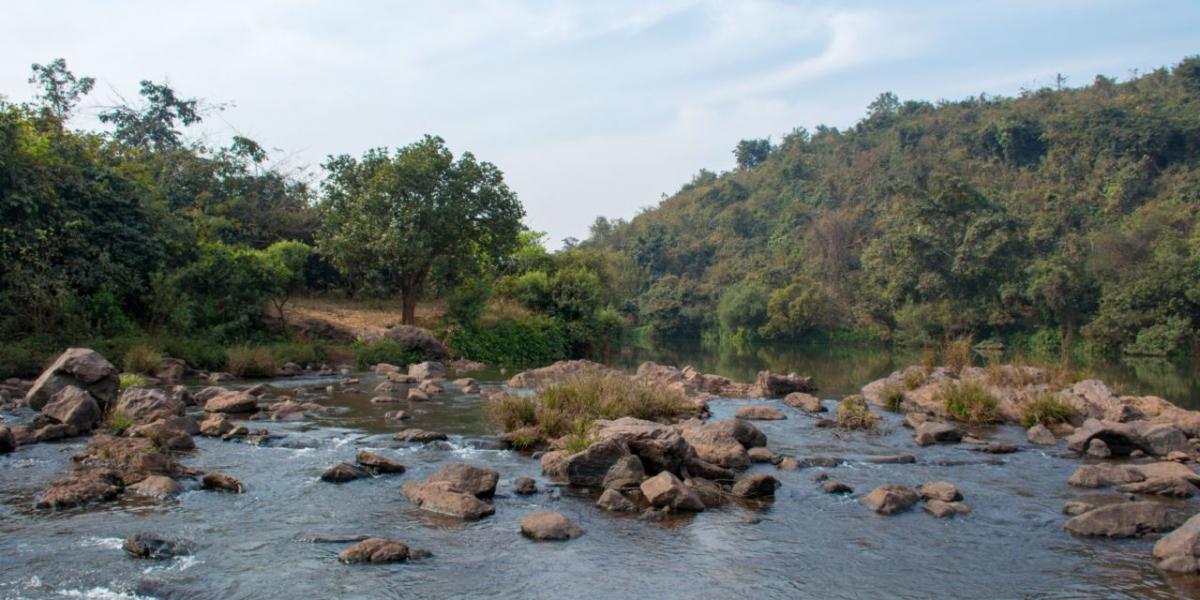The largest Sal forest in Asia is also a rich source of iron ore. The mass felling of trees has turned Saranda into an industrial zone where nature is being tortured for its rich minerals. The recent modifications to sustainable mining plans by the authorities to mine the previously conserved area are a cause for concern.

Singhbhum: The Union Ministry of Environment and Forest (MoEF) modified its Management Plan for Sustainable Mining (MPSM) for Singhbhum and Chaibasa in Jharkhand the request of the state government, Down to Earth reported. These regions fall within the largest sal (Shorea robusta) forest of Asia — Saranda.
The MPSM was finalised by the MoEF in June last year. The plan, among other things, created “no-mining” or “conservation” zones within the Saranda forest and capped the annual mining in the Saranda-Chaibasa region at 64 million tonnes. This was immediately followed by the state government urging the MoEF to modify the plan on August 14 last year, the report said.
The meeting to decide on these modifications was held on February 4 this year between the MoEF, Union Ministry of Mines, Union Ministry of Steel, Union Ministry of Coal and the Jharkhand government.
Down to Earth had access to the minutes of these meetings.
“A slew of modifications have been made in the MPSM by MoEF like merging Zone I and II mining areas, removing of the Impact Assessment clause and scrapping the role of the forest department in creating the mining plan. The modification has also opened up mineral blocks in the no-mining areas of Ankua and Chidia. In the MPSM, the allowing of the 13 mines in this area was dependent on the government. However, MoEF has deleted this clause to bring these under the provisions of the Mines and Minerals (Development and Regulation) Act (MMDR),” the report said.
Jharkhand had also asked the MoEF to delete the clause about the conservation areas earmarked as there are no mining areas mentioned in the MPSM. The rationale given by the state government for doing away with the conservation areas was that it would hamper the supply of iron ore in the future. To this, MoEF has recommended that it shall look into the possibility of mining in these areas using the latest technologies to cause minimum destruction to the ecology, the report said.
“The plan has divided the mining area into two zones – I and II. The idea was to give clearances in Zone I first and only when the mines in this zone are exhausted, the clearances for Zone II mines would be given. This stipulation of the MPSM has been done away with. Interestingly, Tata Steel Limited has requested MoEF for the diversion of around 380 hectares of forest land belonging to Noamundi Iron ore mine, falling in the Chaibasa South Forest Division. According to the state government’s documents, the proposed area forms part of the Singhbhum Elephant Reserve and around 22 hectares of the landfall under the conservation zone of MPSM,” the report said.
In 2014, the MoEF had stopped giving fresh mining clearances in the area after the Shah Commission report found a major violation of the MMDR by the mining companies in the area. The MoEF had mandated that fresh lease would only be given after the MPSM had been created.
About Saranda, the largest Sal forest in Asia
“With an area of 82,000 hectares, the Saranda forest was once a natural habitat to various Adivasi groups and several wild species of plants and animals and famed for its abundant green cover. It stands atop one of the world’s largest single deposits of iron ore – over 2,000 million tonnes. The region was also an important elephant corridor till the early 1990s and it is famously said that even the sunlight found it difficult to penetrate inside the dense forest,” Scroll reported.
“But today the picture stands completely changed. The mass felling of trees has turned Saranda into an industrial zone where nature is being brutalised and mutilated every day for its rich minerals. According to the Indian Bureau of Mines’ 2010 report, West Singhbhum is the most mined district in Jharkhand, and accounts for almost the entire share of iron ore mined in the state,” the report said.
The Union Ministry of Environment, Forest and Climate Change constituted a multidisciplinary expert committee to assess the carrying capacity of the Saranda division. Both the inquiry commission report as well as the multidisciplinary expert committee report clearly state that increased mining activity had seriously impacted the biodiversity of the region.
The Shah Commission further reported illegal mining worth over Rs 22,000 crore (Rs 220 billion) in Jharkhand and suggested cancellation of leases, recovery of lost revenue and punishing errant officials who colluded with the miners.
The Commission found big corporates like Tata Steel, SAIL and Essel Mining as well as medium and small firms Usha Martin and Rungta Mines guilty of wrongdoings and violation of rules. It also stated that the companies were mining in as many as 40 leases in West Singhbhum, including dense Saranda forests, in violation of rules and regulations between 1994 and 2006, the report said.
Gladson Dungdung, a human rights activist who has authored Mission Saranda: A War for Natural Resources In India, said in the report that the successive governments have resorted to the systematic killing of forest in the garb of whopping packages. He described the Rs 263 crore Saranda Action Plan announced by the then UPA government in 2012 as a ploy to silence those who have been protesting more corporate entry for iron ore mining, the report said.
Analysts say the mining leases inside Saranda are in violation of the Fifth Schedule of the Indian Constitution that protects the rights of Adivasis like the Ho and Birhors. The Fifth Schedule requires the government to consult and seek the advice of Tribal Advisory Council on matters of general welfare and transfer of land, the report added.